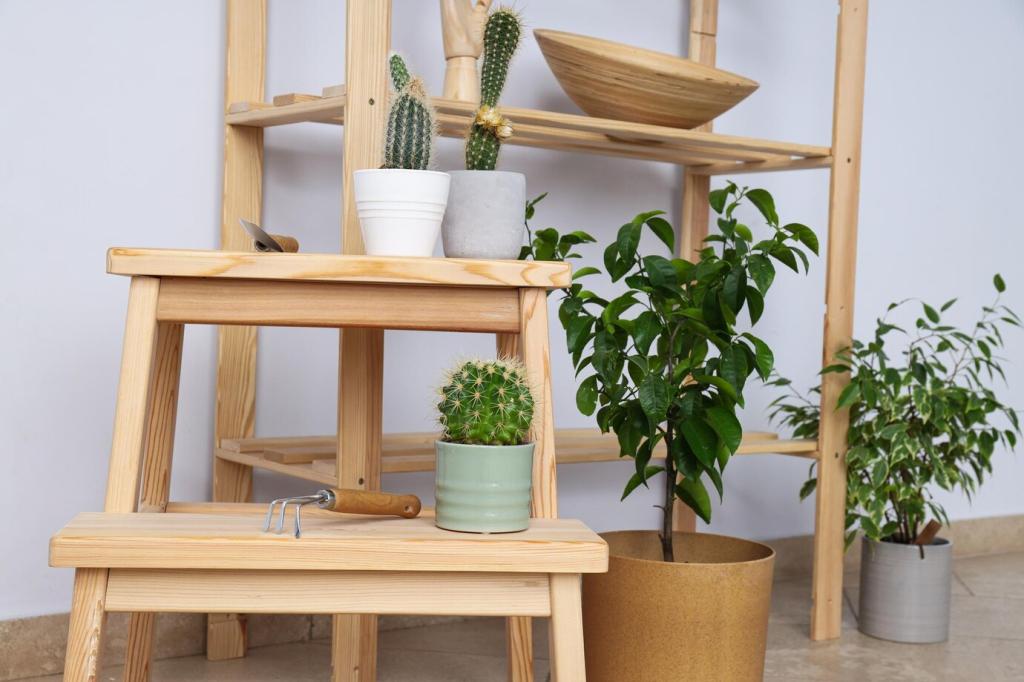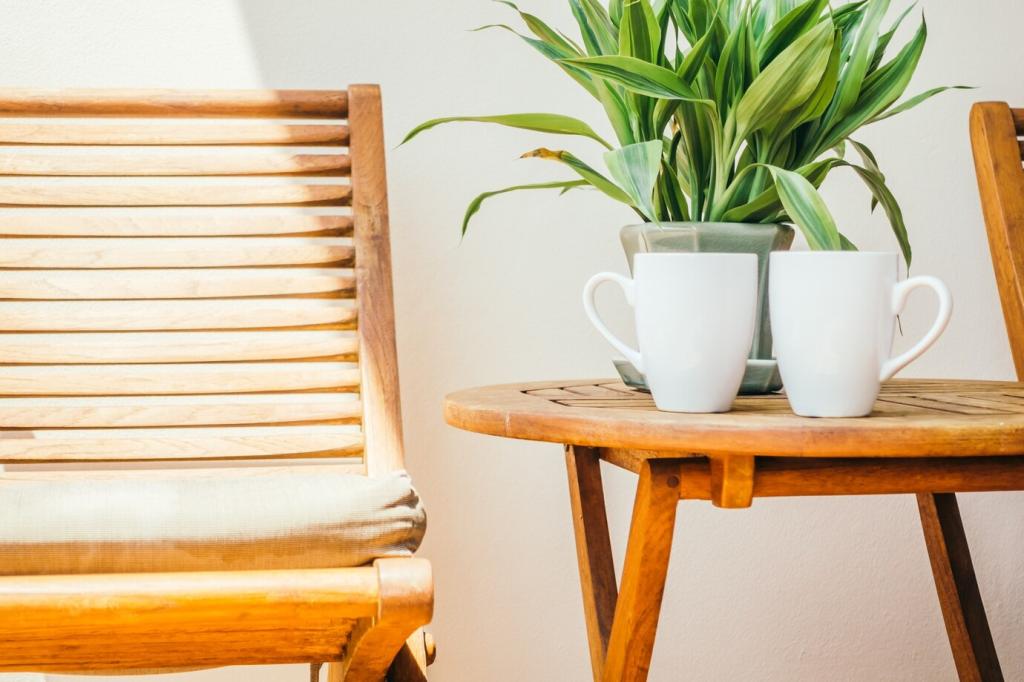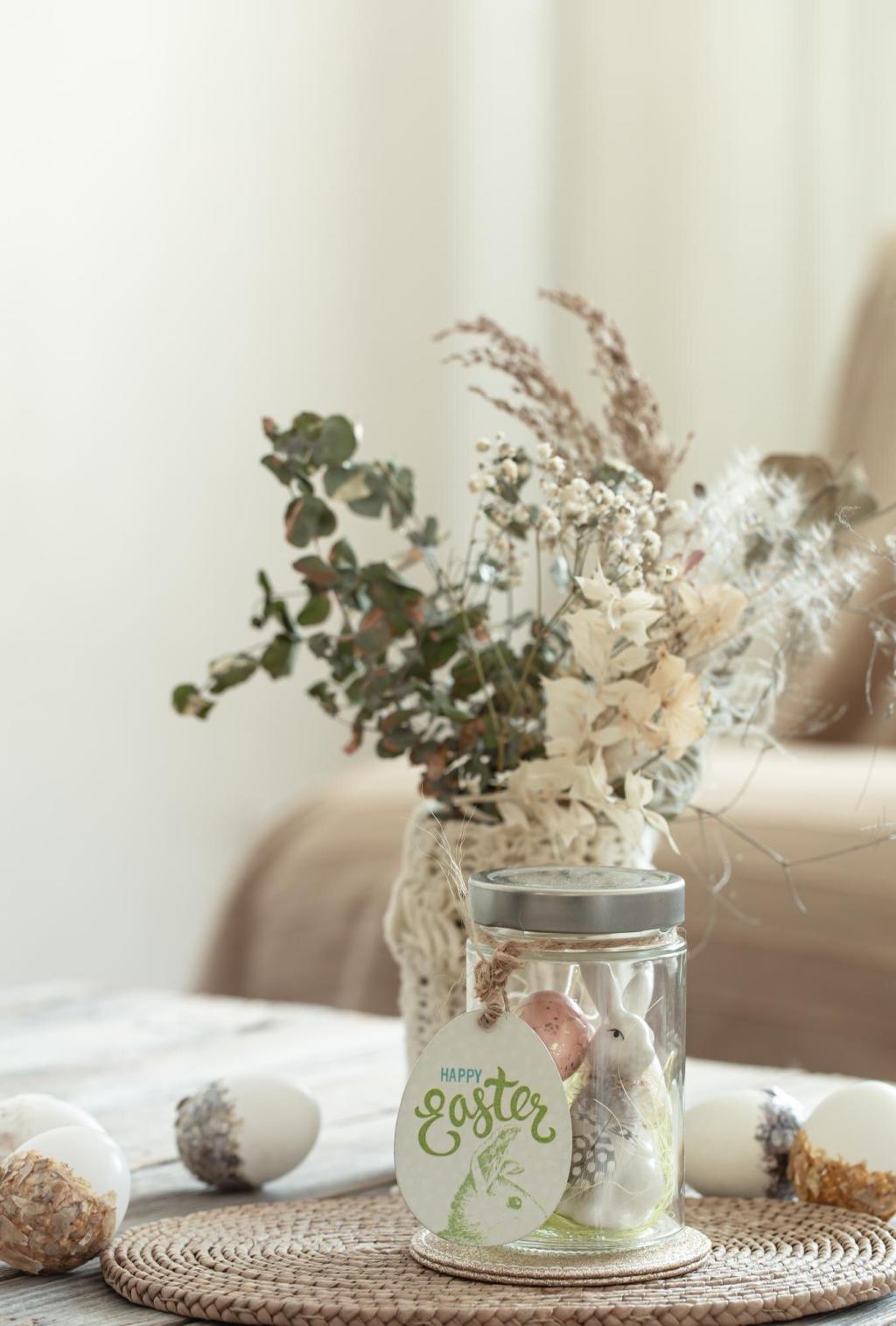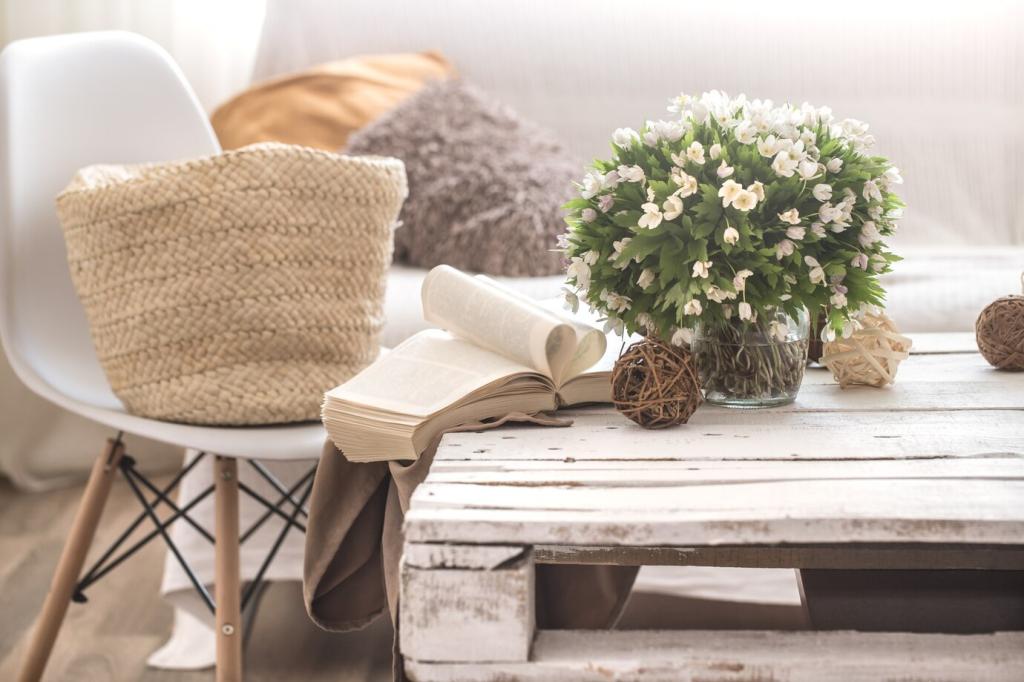Materials and Textures that Amplify Sustainable Color
Limewash and milk paint offer velvety, clouded surfaces that diffuse light, masking minor imperfections while breathing with the wall. Their tactile movement adds quiet character, encouraging longevity because spaces feel soulful from day one, not dependent on constant, wasteful tweaks.
Materials and Textures that Amplify Sustainable Color
Pair mossy greens or clay neutrals with reclaimed oak, walnut, or pine. Botanical-dyed textiles—madder, indigo, or walnut—echo natural tones, resulting in cohesive palettes where patina is celebrated, not concealed, extending life spans and reducing extraction of virgin materials.
Materials and Textures that Amplify Sustainable Color
Introduce recycled glass backsplashes, post-consumer metal hardware, or terrazzo with reclaimed chips. These elements sparkle subtly, reflecting surrounding hues and daylight. The interplay elevates simple palettes, proving sustainability can feel luxurious without relying on fleeting, resource-heavy trends.




